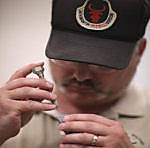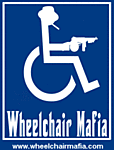Hello everyone

Here is my IMHO on Soviet tank designs.
I
It all started during WWII when Soviet military authorities and ordinary tank crews were impressed by a very well balanced combination of features of our T-34 and the Allies - by German heavy tanks. The armour and fire power of the latest were exceptional, but they suffered lack of mobility and off-road performance, plus complex design. This caused numerous losses of otherwise undamaged vehicles due to mud and/or frost. In addition, it's been proved that most hits on WWII tanks were spotted within 80-140 cm above ground, so it was decided that future tanks should have low silhouette with maximal protection of the aforementioned area and no extra weight elsewhere.
Even the heaviest Soviet tanks of the period were not as heavy as their counterparts.This is the reason why JS-7 with its outstanding armour and fire power never entered service, low production cost was taken to consideration here as well.
During the transition period, when heavy and medium tanks began to transform into one common category we now call MBTs, Soviet designers didn't go too far from T-34 and JS-2/JS-3 weight and size.
II
On the outbreak of the Cold War Western Allies had well-developed industry to create and produce their own vehicles in the U.S.,West Germany,Britain,France and even Sweden and Israel. Thus, all these countries could have use their combined tank arsenal should the war stopped being 'Cold'.
Soviet Union had to support the Warsaw pact countries, plus China,North Korea,Vietnam,Cuba,African and Middle Eastern pro-communist regimes by supplying them with weapons and ammunition. Those weapons had to be transportable and relatively simple to operate and maintain in different climatic and terrain conditions, as well as (sometimes minimal) knowledge and skills of their crews. That is to say,they had nobody to rely upon in terms of production,so, huge amounts of vehicles were needed.
According to the doctrine of the time it was agreed that the Soviet army would pay with 3 of its T-72s for destruction of a single Leopard or Challenger during offensive.
Hope my opinion was interesting,thanks for reading.
Best wishes and happy modelling to all!!!!!





























